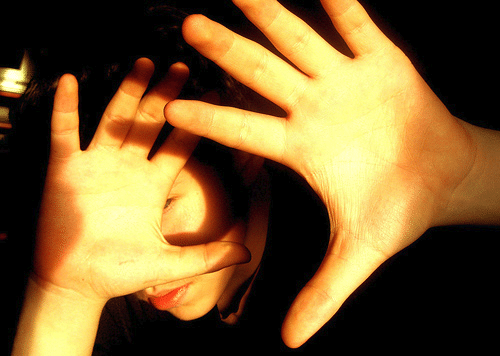In the vestibular lab, we see patients that sense motion too little, and patients that sense motion too much. Patients with chronic inner ear weakness may suffer from reduced information from the vestibular system regarding movement. They learn to rely on other information such as visual or tactile cues, and may be unsteady in situations where that information is unavailable (in the dark), or unreliable (busy visual environment).
Today, we are going to discuss the patient that senses motion too much. They may be overly sensitive to self motion or external visual motion. Most of us know people that are motion sensitive. Some people get seasick, some don’t. Most people can ride in the back seat of a car, a small minority cannot. Almost everyone can ride in an elevator, there are a few that would not dare. It comes down to a matter of threshold. What does it take to trigger discomfort and nausea?
When discussing this issue with patients, I use the example of an extreme threshold. If you strapped me in to my office chair, turned me upside down and spun me around, it wouldn’t take long to exceed my threshold and make me sick. We all have a threshold. For some of us, that threshold is lower than functionally needed. We don’t need to ride on a roller coaster, but society expects us to be able to ride in a car. If we can’t, it impacts our quality of life.
Where does this hypersensitivity come from, and what can you do about it? Good questions, not so good answers.
Many people with a history of Migraines complain of increased sensitivity to many things, not just motion. Migrainuers report increased sensitivity to sound, light, touch, smell, motion, and visual motion. By visual motion, I mean movement in your visual field, even if you are still. Examples of this would be a train passing in front of you, lights flickering through the trees while riding in a car, or sitting too close to a large TV or movie screen.
A classic Migraine headache involves temporary increased sensitivity to light and sound, but there are many reports of increased sensitivity to motion and visual motion between episodes of classic Migraine headache. This can present in two ways: Visual stimulation such a flickering lights, bright sunlight, or TV can trigger a full blown migraine headache, or they can trigger discomfort and nausea. We will discuss some theories about all this next time.








I was diagnosed in 2010 with endolymphatic hydrops secondary to Waardenburg syndrome. But the longer I live with my particular inner-ear problems, the more I’m convinced my diagnosis would be closer to migraine-associated vertigo.
My migraines began about the time I noticed vestibular symptoms in 2008 and worsened this year with two hospitalizations for suspected stroke. An MRI revealed no stroke, so the hospitalist diagnosed hemiplegic migraine.
There’s not a whole heck of a lot that Western medicine can do to help prevent or treat these severe migraines. Beta blockers give me insomnia, and triptans could cause a stroke, so I have turned to acupuncture and Chinese herbs, which so far seem to be helping me.
I am very interested in continued research into the link between inner-ear disorders and migraine. Thanks for shining a light on this subject.
Hi Alan,
What can you tell me about migraine headaches that are triggered by barometric pressure change?
Larry:
Thanks for the question. As I understand it, a drop in barometric pressure against the body can mean a relative increase in pressure within the body. Not too unlike the pressure that builds up in the middle ear cavity on ascent, and that negative pressure that occurs on descent. For some people, apparently they can feel that pressure elsewhere in the body as well,
Here’s a link to a short explanation https://www.accuweather.com/en/weather-news/weather-may-cause-migraines-joint-pain/41167122
However, like most thing migraine related, they are still figuring it out.